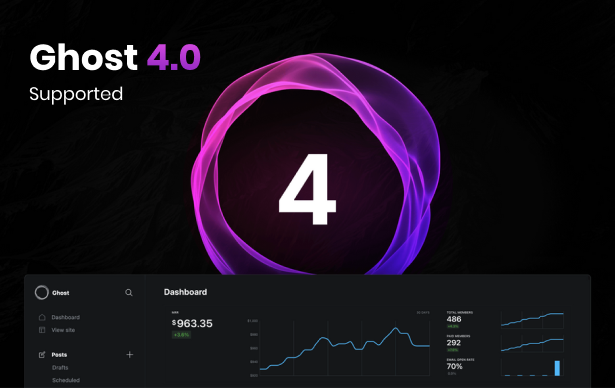
Many of you already know Giuseppe, but in case you don’t, he’s one of the top minds in the liquid domain space and publishes quarterly reports on the liquid domain market at GGRG.com. He actually just released his latest report this week which was highlighted in DNJournal yesterday.
As I’m looking at shifting my own investment strategy to focus more on liquid domains next year I really wanted to pick Giuseppe’s brain. Then I thought, why not turn it into an interview that I can share with all of you? Huge thanks to Giuseppe for taking the time to answer these questions, first a quick disclaimer and then onto the interview!
Disclaimer: The minimum entry tickets, prices indications, and advice in the interview are for information and illustrative purposes only. Any of the information mentioned in the interview should not be regarded as investment advice or as a recommendation regarding any particular domain purchase or course of action.—
1. If an investor is looking to build a liquid portfolio, would you recommend numeric domains, letters, or a combination of both? There are 2 ways to answer this question based on 1) how much money you can invest and 2) if you are a buy-and-hold type of guy versus a trader who likes quick flips. Let’s look first at #1, the entry tickets. If you are starting out, I would definitely go for the least expensive liquid categories like the 4 letter .com (4Ls) domains, the 5 number .com (5Ns) domains and the 3 characters .com (3Cs) domains. These categories have a $100+ entry ticket and are accessible (and recommended) to most newbies. When you graduated from the low ticket items, you can move up the ladder to 3Ls, 4Ns, and 2Cs, which have a $10k+ entry ticket. These categories are less liquid because of their steeper price. Finally, for the high-stakes pros, there are the premium items like the 2Ls, 2Ns, and 3Ns, with an entry ticket of $100k+. About your investing style: if you prefer a buy-and-hold strategy, (i.e. you buy a domain and then you are comfortable waiting for an end user), I would look at the most developed categories, which are the ones with the highest percentage of end-user ownership. We call that percentage “development index”. According to our latest LXDO report (which we publish quarterly in collaboration with Escrow.com, Intelium, and ShortNames, and which you can receive for free by signing up for our newsletter at ggrg.com) the most developed categories are the 2 letter .com (35%), followed by the 3 letter .com (28%) and, finally, the 2 characters .com (26%). If you are looking instead at making frequent trades with smaller margins, I would look at the most traded categories like the 4Ls, 5Ns, and 3Cs. These are the categories which register a quarterly turnover higher than 0.5%. What does this mysterious quarterly turnover number mean? It means that the market for those domains is very active (thousands of transactions per quarter) and it is easy for you to resell your domain if you want to.—
2. How have you seen the dynamics of the numeric domain name market change over the last year? According to the data in our reports, all liquid domains categories covered by the LXDO have steadily declined over time in terms of floor price. We are still in the aftermath of the Chinese bubble of 2015, and today there are a lot less Chinese buyers active in the market. Conversely, we have noted an increase in activity by non-Chinese investors, especially for the most developed categories, that is 2 letters, 3 letters, and 2 characters .com.—
3. Where are the best places for investors to look if they want to buy wholesale? A good rule of thumb for buying domains (or anything really) is “go where you have less competition”. It’s the universal law of supply and demand. In practical terms, the best place for buying domains wholesale is almost always private deals, because you are likely the only buyer negotiating with the owner. Conversely, if you are a seller, you want to sell where the largest amount of active buyers are, like the most popular action houses, marketplaces or the best domain brokers. For the low ticket items like the 4 letters, 5 numbers or 3 characters, I would definitely look at GoDaddy or Namejet because they probably have the largest user base. For the mid-range items (3L, 4N, 2C), we recently launched an investor marketplace specifically for 3L .com domains called LXME.com (Liquid Domain Market Exchange). All the largest investors are active there and you can manage to sell your 3 letter .com domain very quickly at industry low fees. One of our Danish customers managed to sell his 3L .com literally within 15 minutes of setting the right price! Finally, for the high ticket items like the 2 letter, 2 number or 3 number .com, I would hire a professional broker to represent you, because that allows you to target end users and not just investors. You can seriously hurt your chances of getting top dollar if you go about selling your ultra-premium domain the wrong way, for example by listing it on auction with an incorrect reserve price, or by hiring someone who is going to carelessly shop it around. We have extensive brokerage experience at GGRG.com, with over $10M in sales in liquid domains only, so if you are looking for a broker for a high ticket item, I would definitely recommend to contact us.—
4. What kind of margin should investors expect to see on liquid domains? i.e. should I expect to buy at 50%-off the liquid value, 25% off, etc? There is a sensible saying in real estate: “You make money on the buy”. The same rule applies to domains. If you can buy a domain at 50% off its floor price, fantastic! If you manage to do that, you stand to make 50%+ in profit when you sell it. The issue though is that liquid domains is a competitive market and there are lines of investors wanting to buy at 50% off. Just imagine selling an apartment in Manhattan (or central Lisbon, these days) – how many buyers do you think would queue up to buy at half price? Tons! More realistically, it is easier to catch opportunities at 10-20% off, although even these are rare. It is easier to find great deals if you are ready to buy high ticket items (like 2Ls .com) or if you buy in large volumes.—
5. While the word “liquid” is used, what is the realistic time it would take to sell a liquid domain? I will answer this question the long way. Please bear with me. The liquidity of a domain is directly proportional to the number of buyers interested in buying your domain. If you want to sell a 4 letter .com, there are probably 1,000+ buyers ready to buy your domain around floor price, which means that you can liquidate your domain within a few days, provided you have a way of reaching those buyers, for example through an auction platform. But if you want to sell a 2 letter .com, the number of buyers out there is much smaller, which means that, unless you are happy taking the first offer that comes along, you would have to wait a longer period, which could take up to several weeks. On average, the longer you can wait, and the more buyers you can reach, the highest is the amount you can sell your domain for. If you read this again slowly, you will realize this is not rocket science. To give you a concrete example, a competent broker would be probably able to get you 6 digits offers for your 2 letter .com within 7 days – just do not expect it to be top dollar. Similar timing, different offers, for a 3L .com. This is the reason why I started LXME.com in the first place, to allow owners to liquidate their 3L .com domains at the highest wholesale price, in the fastest way possible and without needing to rely on an extensive network of people within the industry.—
6. Do you consider a domain “liquid” if the buyer is an end user or only if it’s another investor? A domain is considered liquid independently if the buyer is an investor or an end-user. If you do sell a liquid domain to an end-user though, you stand to make a lot more money, which is why the most successful investors I know, look for liquid domains with end-user potential. The liquidity limits their downside (in case an end user never shows ) and they stand to make a large profit if they manage to sell to an end user. I noticed a pattern where good domain investors buy any liquid domain around floor price and resell it quickly, and great domain investors buy good domain names at fair prices and then hold them to sell to an end user for a large margin. If I recall correctly that’s also how Warren Buffet’s strategy evolved – he went from buying bad companies at bargain prices to buy great companies at fair prices. Maybe it is a sensible advice for domain investors too.—
7. What is the biggest mistake you see people make when they’re trying to build a liquid portfolio? Jumping into the market without first trying to understand the market dynamics. For example, a newbie might start out buying a few .org or .net domains because they are cheaper and their .com counterpart sold for top dollars. Wrong. What you really bought is a domain (or portfolio) with no end user upside and for which there are only a handful of active buyers. But this mistake is nothing compared to what I am going to write about next.The mistake that unfortunately, I see too many people doing, despite dozens of newsletters and blog posts, is that they go out and hand register domains believing they are liquid. Stop the madness. This is by far the most common way of losing money in domain investing and I say this because I lost a lot of money myself in this way. As my friend Yoni says: “If a domain is available for registration, it is the most crowd-sourced method to tell that it is worthless”. There is this unfortunate myth which says you can register a good domain and then sell it, but I’ll say it again in the hope people do not make this mistake: do not register available domain names for investment purposes! While there were times in the history of mankind where this was possible (like the fabulous TRAFFIC’s decade, the 6N .com run in 2015 or the typo domains), those times are gone. There are over 300M registered domains, so your chances are less than slim. There is the occasional lottery winner who manages to sell a domain, but 99,9% of new registrations never sell. You only read about these lottery sales but you do not hear about the millions lost in hopeless renewal fees. I will say it again: unless you are a wizard or Mike Mann, do not hand register domain names. I said it 3 times, hopefully, it works.
—
8. I’ll end with a fun one! Giuseppe, what’s one thing that most people don’t know about you that they’d be surprised to learn? 3 things about me that might surprise:I got so obsessed with the Chinese market that I developed a mild OCD with numbers. For example, whenever I catch the metro, I always go through the gate that has the more auspicious numbers. If there are multiple exits, I would always take the ones containing 8, repeated patterns and, obviously, no 4s. For years I got off the metro station at exit 008. It got to a point where my girlfriend knows this and can tell already which exit I am going to take. And makes fun of me.When I was first studying domain names, your videos [Morgan’s] were one of the first resources I came across. I particularly recall one in which Morgan compared real estate to domain investing [you can link the video if you want].Oh, and I used to have long hair! This surprises quite a few people. (see below)




